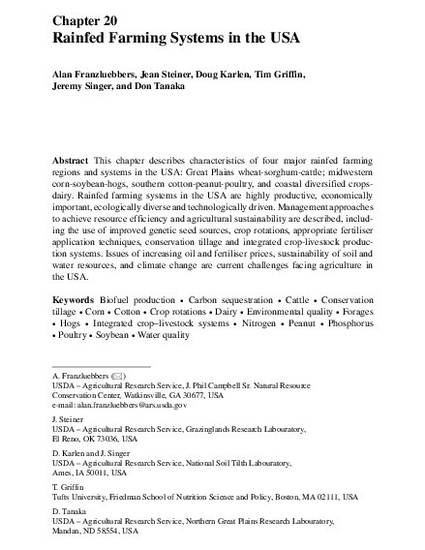
P. Tow et al. (eds.), Rainfed Farming Systems, DOI 10.1007/978-1-4020-9132-2_20
This chapter describes characteristics of four major rainfed farming regions and systems in the USA: Great Plains wheat-sorghum-cattle; midwestern corn-soybean-hogs, southern cotton-peanut-poultry, and coastal diversified cropsdairy. Rainfed farming systems in the USA are highly productive, economically important, ecologically diverse and technologically driven. Management approaches to achieve resource efficiency and agricultural sustainability are described, including the use of improved genetic seed sources, crop rotations, appropriate fertiliser application techniques, conservation tillage and integrated crop-livestock production systems. Issues of increasing oil and fertiliser prices, sustainability of soil and water resources, and climate change are current challenges facing agriculture in the USA.
Available at: http://works.bepress.com/douglas_karlen/30/
